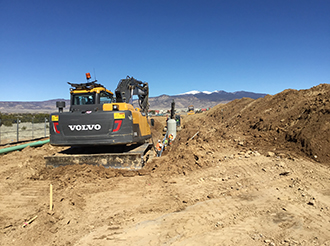The Pueblo of Acoma Housing Authority (PAHA) reached an important milestone for its first Low Income Housing Tax Credit (LIHTC) project, PAHA LIHTC Homes #1, earlier this month— it closed with an equity investor and began construction!
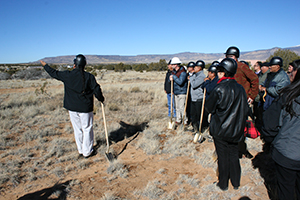
In December, Trent Rogers and I attended the ground breaking ceremony for the project. We witnessed the overwhelming community support and excitement for the community’s new development.
How does a project move from a design idea to a successful closing and groundbreaking? It’s a sophisticated process of planning and teamwork:
Step 1: Initial Site Visit
A “design charette” was scheduled on site with the team at the PAHA, who participated and provided input to guide the design of their new project. During the initial meeting, we studied the site, discussed the New Mexico LIHTC design requirements and discussed PAHA’s needs and goals for the project.
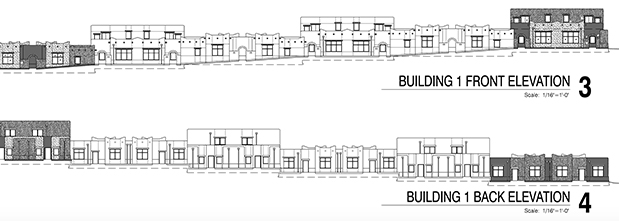
All of these pieces came together and created a detailed scope of work. It was important to the tribe to preserve the architectural history associated with the original pueblos but to also modernize that idea. The blend of the old and new came together to create a modern community-driven development. We also discussed materials and equipment that worked best for them and integrated that into the design plan.
Step 2: Preliminary Design Phase
Following the charette, we assembled a schematic design package and came up with the formal scope of work and preliminary plans for PAHA’s new units. This phase of the design process is closely coordinated with the Travois Development team to ensure that all of the project requirements are met, including incorporation of the LIHTC application commitments. The design package was coordinated as part of the application process to ensure the design helped PAHA have the most competitive LIHTC application possible.
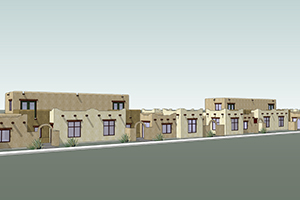
Step 3: Coordinating Low Income Housing Tax Credits
As the project manager for the architectural design and construction documents, integrating the building requirements from the state’s LIHTC program are part of my job. I worked closely with the development team to coordinate the green program points and the commitments made within our application into the project.
This is an important step in the project, and by coordinating this work during the planning phase of the project we save a lot of headaches later on. We also provide all the necessary architectural documents that had to be submitted to comply with the LIHTC program.
Step 4: Construction Documentation
Once the project received an award of credits, it moved into the design development phase. More detailed plans and details were drawn for PAHA’s review and input. The drawings continued to be developed, and comments and revisions were integrated as I assembled the construction set.
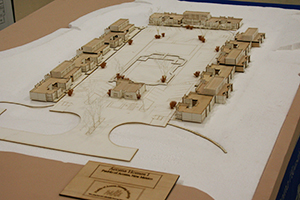
Many different organizations involved in the project funding also reviewed and approved the plans. The equity investor, the state agency, and green building agency reviewed the plans for compliance with their requirements. Approval was required for construction to begin. After approval from the owner and the various agencies, we reviewed the full construction set internally for one last quality control check. As the architect, we stamped the construction documents and issued the full set which included specifications. These were used along with the project manual as the bid documents to request competitive bids from contractors for the project.
Step 5: Construction Contract/Bid Procurement
As part of the architectural services, we provided the construction documents and assembled the procurement package that PAHA needed in order to put the project out to bid. The bid package requested competitive proposals from both local contractors, and contractors experienced in tribal LIHTC projects. I traveled to New Mexico to conduct the pre-bid meeting and site visit which answered many contractor questions. We assisted PAHA in reviewing and analyzing the bids received on the project. Once a contractor was selected, I also attended the pre-construction meeting to help organize and establish construction operations with PAHA and the general contractor.
The project has now finally reached construction, but that means the construction administration work is just beginning:
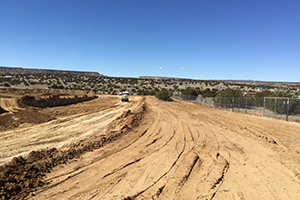
Step 6: Construction Administration/Construction Monitoring Services (Work-in-place)
As the architectural project manager, I will visit the site once per month during the construction phase. We check that construction is being completed according to the plans and specifications and check construction progress.
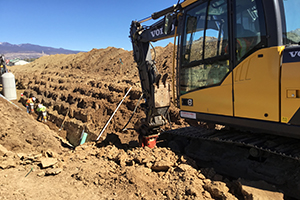
We certify the requests for payment submitted by the contractor, and this is based on the completed work observed. Upon completion of the site inspection, we provide a report to PAHA with this progress information and any deficiencies observed in the work. These monthly observations help to keep the project on schedule, and maintain the project’s LIHTC commitments made to the equity investor.
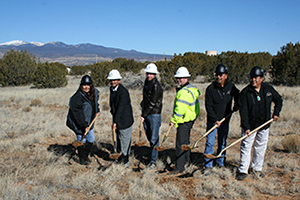
Congratulations to the Pueblo of Acoma Housing Authority for this great achievement! I’ve enjoyed working with you to reach this milestone, and I look forward to seeing this project come together!


